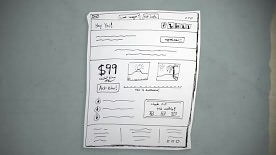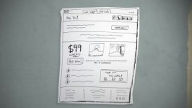

eBook
Related collections and offers
Overview
Few things are as exciting—and potentially life-changing—as discovering an old letter. And while etiquette books still extol the practice, letter writing seems to be disappearing amid a flurry of e-mails, texting, and tweeting. The recent decline in letter writing marks a cultural shift so vast that in the future historians may divide time not between BC and AD but between the eras when people wrote letters and when they did not. So New York Times bestselling author Simon Garfield asks: Can anything be done to revive a practice that has dictated and tracked the progress of civilization for more than five hundred years?
In To the Letter, Garfield traces the fascinating history of letter writing from the love letter and the business letter to the chain letter and the letter of recommendation. He provides a tender critique of early letter-writing manuals and analyzes celebrated correspondence from Erasmus to Princess Diana. He also considers the role that letters have played as a literary device from Shakespeare to the epistolary novel, all the rage in the eighteenth century and alive and well today with bestsellers like The Guernsey Literary and Potato Peel Pie Society. At a time when the decline of letter writing appears to be irreversible, Garfield is the perfect candidate to inspire bibliophiles to put pen to paper and create “a form of expression, emotion, and tactile delight we may clasp to our heart.”

Product Details
| ISBN-13: | 9780698138605 |
|---|---|
| Publisher: | Penguin Publishing Group |
| Publication date: | 11/14/2013 |
| Sold by: | Penguin Group |
| Format: | eBook |
| Pages: | 464 |
| Sales rank: | 912,698 |
| File size: | 33 MB |
| Note: | This product may take a few minutes to download. |
| Age Range: | 18 Years |
About the Author
Read an Excerpt
From Chapter 15: Inbox
In June 2004, 190 people replied to a survey conducted by the Sussex-based Mass Observation Project on the subject of letters and emails. It seemed like a good time to take stock: email and personal computers were now a regular part of our lives. The respondents reported writing fewer letters, and regarded email as useful but limited: they would not trust their intimate thoughts to email, and they often printed them out, uncertain whether they would still be on their computers in the morning.
There was still a fondness for tradition: of the 190 people who replied to the survey, 82 per cent sent in their written answers by post.*
But the behavioural details of the survey provide a valuable anecdotal glimpse into the attitudes of general users at a time when email was becoming part of the fabric of our lives. Nine years since the survey, the replies seem both quaint and touching, but they reveal more than mere nostalgia; the impact of receiving hand-delivered mail clearly extends beyond words on a page.
‘I can remember receiving my first mail as a young girl and the thrill it gave me,’ wrote a 68-year-old woman from Surrey. ‘Sometimes I would send off for something, like a sample of face cream or a film star’s picture.’ Her first pen pal was an American girl from Pikeville, Kentucky, who sent her Juicy Fruit chewing gum and a subscription to a girl-scouting magazine. Later she wrote to a Swedish boy in Landskrona and a Turkish naval cadet.
An 83-year-old woman from Belfast remembered wistful letters during the war. ‘One used to put SWALK on the back of the envelope [sealed with a loving kiss] but my mother and father did not quite approve.’*
A woman from Blackpool received four round-robins every Christmas, ‘mostly about people we don’t know or care about . . . No-one who sends them seems to have children or grand-children who are not brilliant. The minutiae they go into (We rise at 8am with the alarm and I bring tea in bed to F) is amazing. It’s especially difficult when someone you don’t remember or may not even have known is reported dead.’
A 45-year-old man from Gloucester wrote that ‘real letters are quite rare and are usually much appreciated. They do make you feel that someone cares about you.
I especially appreciate the rare letter I receive with beautiful handwriting on it. I do have one friend with lovely writing. It seems a shame to open the envelope, and she doesn’t write at all often.
Not so long ago her much-loved husband died very suddenly aged 60, and she
sold their house and moved. When she was clearing the cellar, the last cupboard
in the farthest corner buried behind all sorts of stuff was found to contain both side of an extremely lurid, passionate (and current) correspondence between her deceased husband and a Russian woman whom he was having a very steamy affair with and of which she was entirely ignorant. He had repeatedly promised to leave his empty marriage of 33 years for her (my friend loved her husband dearly and had thought the marriage, sex and all, to be going really well). The contents of all her husband’s meticulously copied love letters were appallingly wounding to her as indeed was the revealed fact of his unfaithfulness, just when she could no longer tackle him about it. Just when she thought things couldn’t get any worse.’
Reprinted by arrangement with GOTHAM BOOKS, a member of Penguin Group (USA) LLC, A Penguin Random House Company. Copyright © SIMON GARFIELD, 2013.
* In 2013, email responses had increased to 45 per cent.
* The origin of SWALK is uncertain, but the common wisdom attributes it to
American soldiers in the Second World War. There are others, with varying geography
and spelling:
NORWICH – Nickers Off Ready When I Come Home
ITALY: I Trust And Love You
FRANCE: Friendship Remains And Never Can End
BURMA: Be Undressed Ready My Angel
MALAYA – My Ardent Lips Await Your Arrival
CHINA – Come Home I’m Naked Already
VENICE – Very Excited Now I Caress Everywhere
EGYPT – Eager to Grab Your Pretty Tits
Table of Contents
1 The Magic of Letters 13
2 From Vindolanda, Greetings 31
3 The Consolations of Cicero, Seneca and Pliny the Younger 44
In which we get a proper education.
Letters from Abroad 66
4 Love in Its Earliest Forms 71
How to Build a Pyramid 92
5 How to Write the Perfect Letter, Part 1 95
Trying to Impress 114
6 Neither Snow nor Rain nor the Flatness of Norfolk 120
Your New Lover 144
7 How to Write the Perfect Letter, Part 2 148
Entirely Gone 172
8 Letters for Sale 176
Let Us Mention Marriage 201
9 Why Jane Austen's Letters Are so Dull (and Other Postal Problems Solved) 206
More Than Is Good for Me 232
10 A Letter Feels Like Immortality 236
All a Housewife Should Be 267
11 How to Write the Perfect Letter, Part 3 271
Photographs 286
12 More Letters for Sale 290
Greece and London, Liberation and Capture 319
13 Love in Its Later Forms 330
Days Become Weeks 355
14 The Modern Master 360
The Coming Home Question 385
15 Inbox 390
In the Flesh 410
Epilogue: Dear Reader 424
Acknowledgements 444
Select Bibliography 446
Picture Credits 450
Permisions Credits 452
Index 453
What People are Saying About This
"Stuffed with marvelous anecdotes, fascinating historical tidbits and excerpts...[Garfield’s] epistolary ardor proves infectious."
—The New York Times Book Review
“Thoroughly captivating…Garfield shows us the poetic nature of the written word. . . . An overdue homage to something we once took for granted but really was an art.”
—The Tampa Tribune
"A wonderfully elegant history."
—Observer
"Garfield is a best-selling writer of irresistible enthusiasm….[His] robust and propulsive engagement with letters as an essential embodiment of the human spirit and a driving cultural force makes for exciting reading and thoughtful speculation about the future of scholarship and communication."
—Booklist
"This endlessly informative book from one of Britain's best non-fiction writers provides a heartfelt reminder of just how much we'd lose... the book serves up any number of vivid examples from people famous and unknown."
—Reader’s Digest
"He offers hope for the letter as a form of writing – though it is not his theme – because he makes clear that people’s instinct to share, discuss, and transmit their deepest, most strongly held feelings survives and adapts, even as technology changes."
—Financial Times
Related Subjects
Videos


